How to Get Your Baby Ready to Swim
Swimming is more than just a fun sport to watch at the Olympics. The ability to swim is an important life skill that every child should learn from a young age and practice all the way through their lives.
As an Olympic swimmer, I always fantasized about finally being able to take my own children into the water for the first time. After having my first baby in 2020, I found myself overwhelmed at how to actually go about getting my baby swimming! Here are 4 steps to start getting your child safe and comfortable in the water.
.
Start in the Bath
.
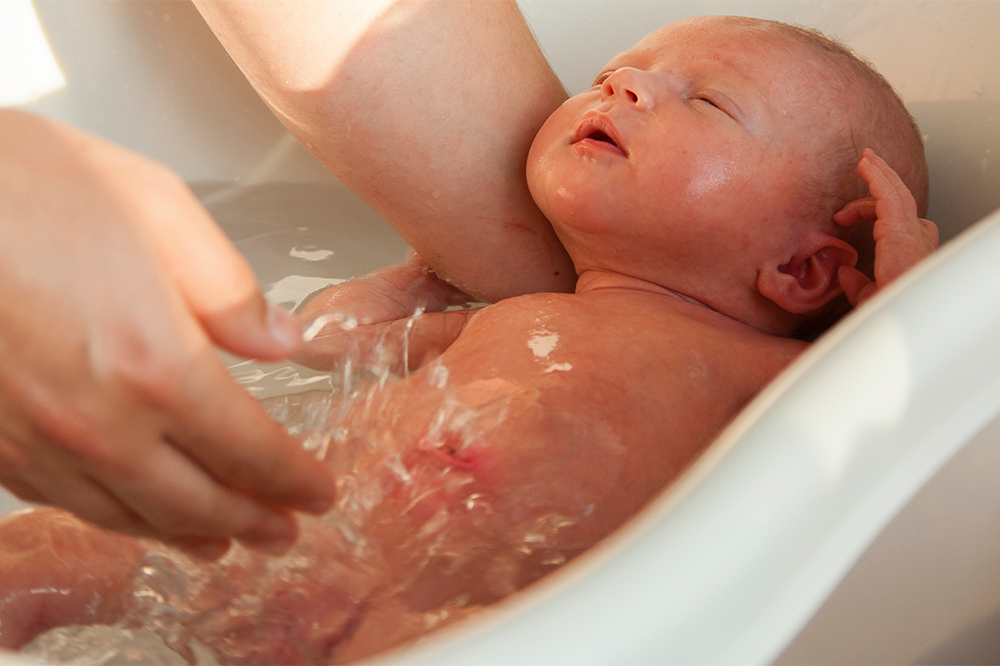
.
As soon as the umbilical cord has fallen off, parents can start getting their baby comfortable in the water! It begins with simply making the bathing experience a positive one! Singing songs, playing with bath toys and bubbles, and letting your baby experiment with splashing and kicking begins building a foundation of enjoying being in the water.
The next step is to begin getting the baby’s ears wet. I started around 4 months old by filling the bathtub with a few inches of water and laying my son on his back so his ears just got a little bit wet. We progressed to deeper water and assisted him in some supported floats to get him used to the sensation. At around a year old we also encouraged some bubble blowing in the water and kicking while laying on his tummy!
We practice verbal cues to help him learn when to hold his breath and close his eyes. I’ll say “Water in 1, 2, 3!” while modeling a deep breath and closing my eyes before pouring a little water over his face. Once we were ready for a real dunk in the pool, I could say the same cue.
Test the Waters
.
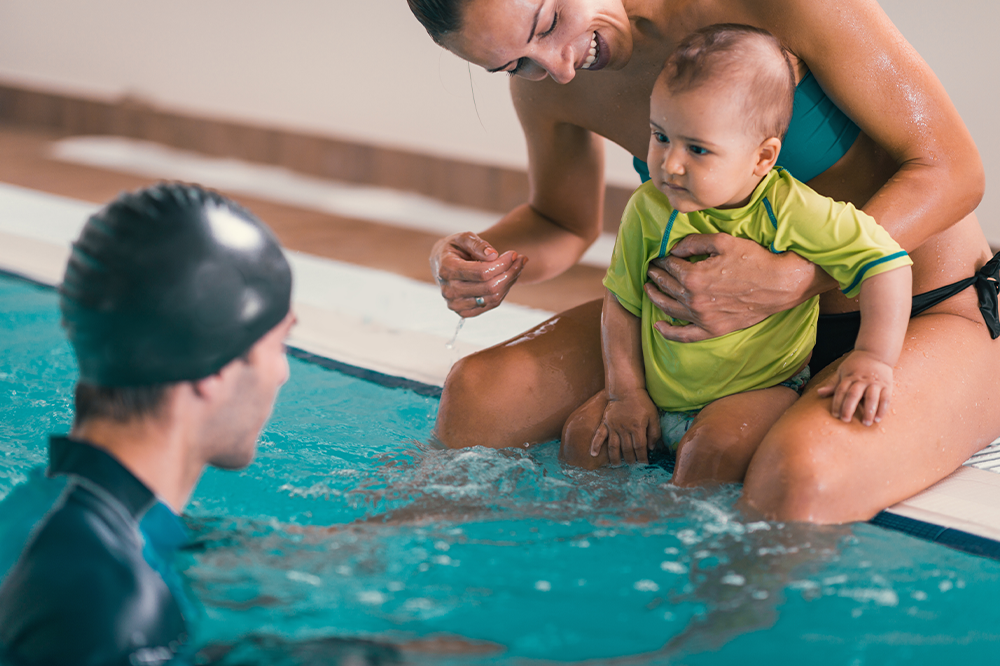
.
Before signing up for any formal lessons it can be good to visit a local pool with your baby and start to get them used to the environment as well as the sensation of the cooler water on their skin. You can begin by simply sitting on the edge of the pool and dripping some water over your baby before letting them put their feet in the water.
Once you feel comfortable stepping into the water, hold your baby and walk around increasing the amount of their body you submerge. You can begin with just the feet and eventually get most of their torso in the water. Sing some songs and let them explore with their hands and feet.
.
Start Lessons (and Keep Going!)
.
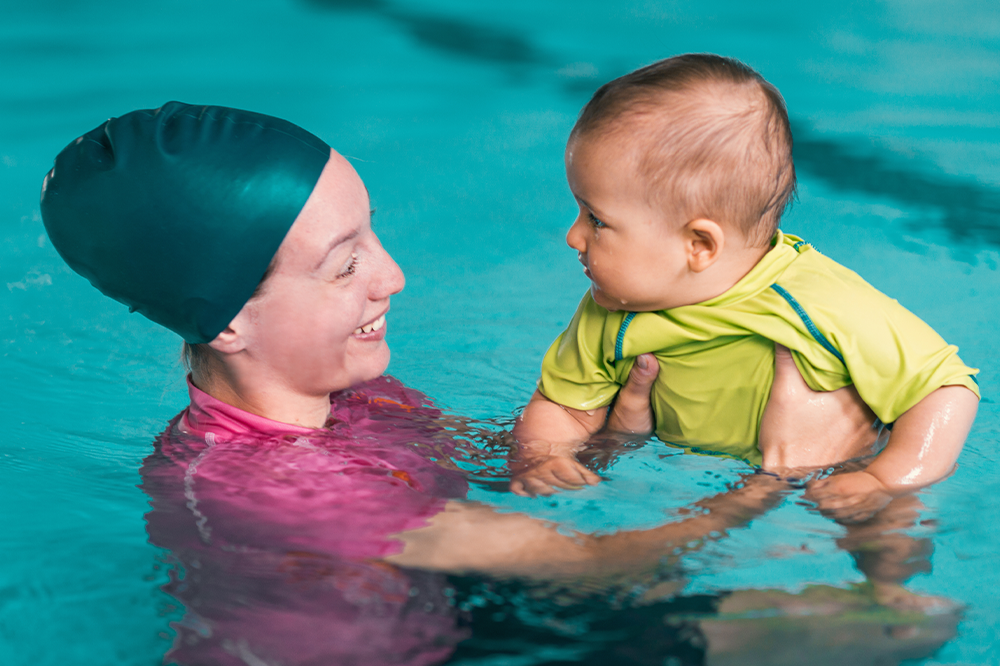
.
Many swim schools begin lessons as early as 6 months, however, the AAP doesn’t recommend starting swimming lessons until after a child’s first birthday because there isn’t any proof that they’re beneficial and the health risks of swallowing water are greater before 1 year.
So once your little one reaches one, find a local swim lesson program! Evidence suggests that signing up your toddler for swim lessons is not only safe but may help prevent drowning.
Even with myself being an Olympic swimmer, I knew that I wanted parent-tot group lessons so my son felt more comfortable. I also wanted a professional, trained in his age group, so I looked for a local program with a qualified instructor.
Be sure to continue lessons throughout childhood! Not only is it smart to participate in swimming lessons for drowning prevention, but swimming is also an excellent sport for developing stronger muscles, coordination, and lung capacity!
.
Teach Your Child to Respect the Water
.
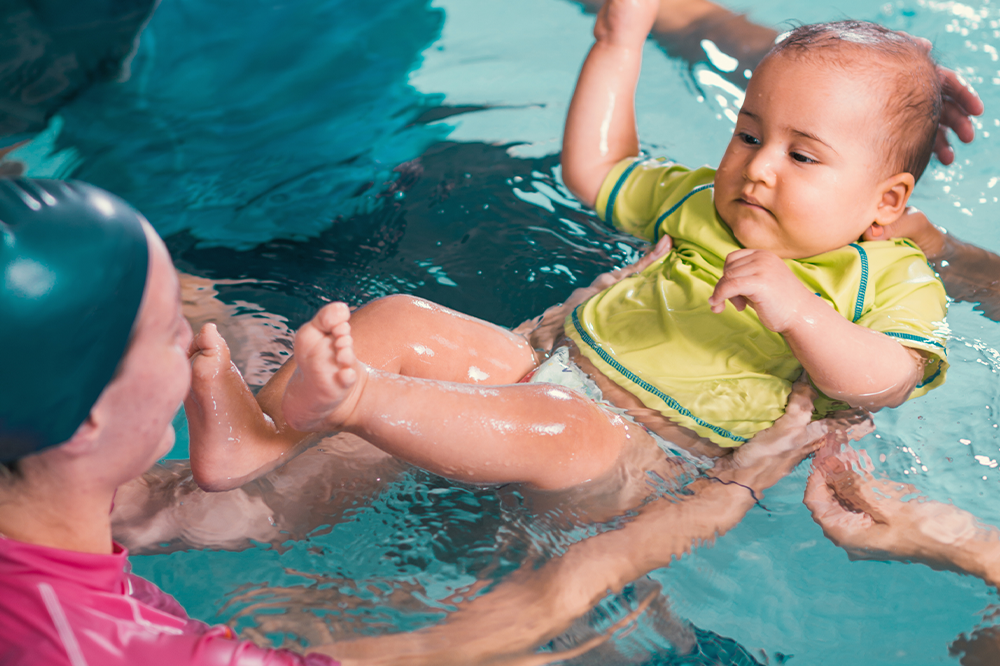
.
It’s important to remember, and to teach your child, to have a healthy respect for the water and that no matter how strong of a swimmer they are, nobody is immune to drowning.
.
Here are a Few Extra Tips for Safe Swimming:
.
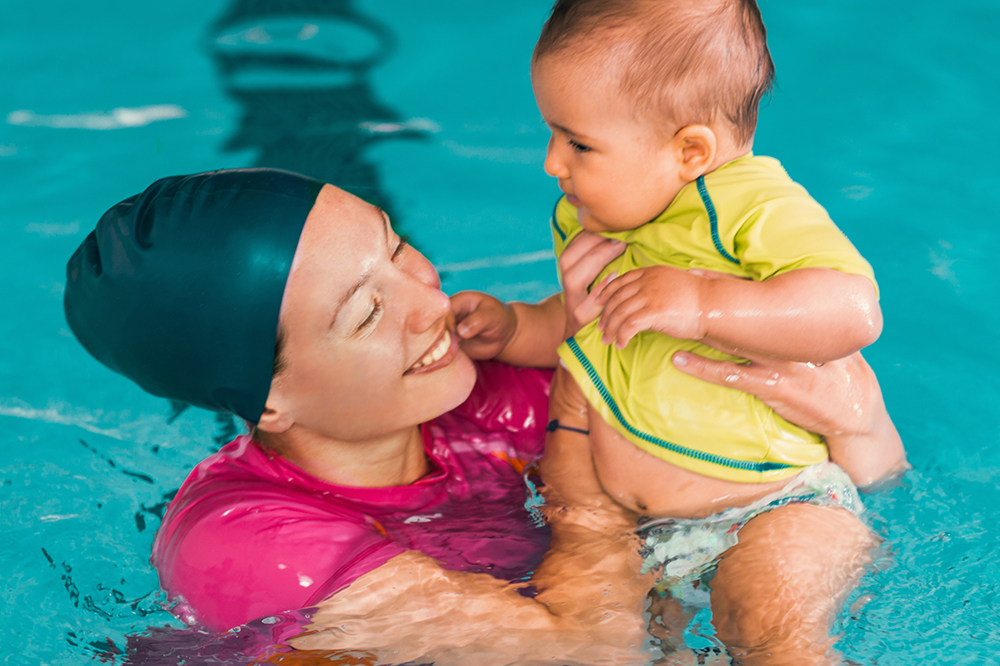
.
- Never Swim Alone: Even as an Olympian, I NEVER swim alone. Always supervise your child anytime they are anywhere near any water and make sure they understand that they should never go near water without a lifeguard or a responsible parent.
- Don’t Rely On Floaties: They may seem like a great idea and they are often marketed as “safety devices”, however, frequently putting a child in a flotation device that holds them in an upright position can instill a false sense of security around water and discourage learning proper swimming skills. Wear a lifevest when necessary, but don’t rely on floaties for safe swimming.
- Dress Your Child in Bright Colors: Blues and greens can camouflage a swimmer with the bottom of the pool. This can make it harder to see them if they are in distress. Dress your child in oranges, yellows, and reds when they are swimming so lifeguards, and you, can see them better.
- No Breath Holding Games: Many children play games where they challenge each other to hold their breaths. This is incredibly dangerous. Even elite-level swimmers have experienced what’s called “shallow water blackout” from holding their breath longer than comfortable. Teach your children the dangers of breath-holding games and stop it if you see them.
- Remember – Drowning is Silent: Even in a crowded pool, drowning can go unnoticed. It doesn’t look like what you see in movies. Keep a keen eye and watch for a swimmer struggling to stay above the water.
Good luck and happy swimming!

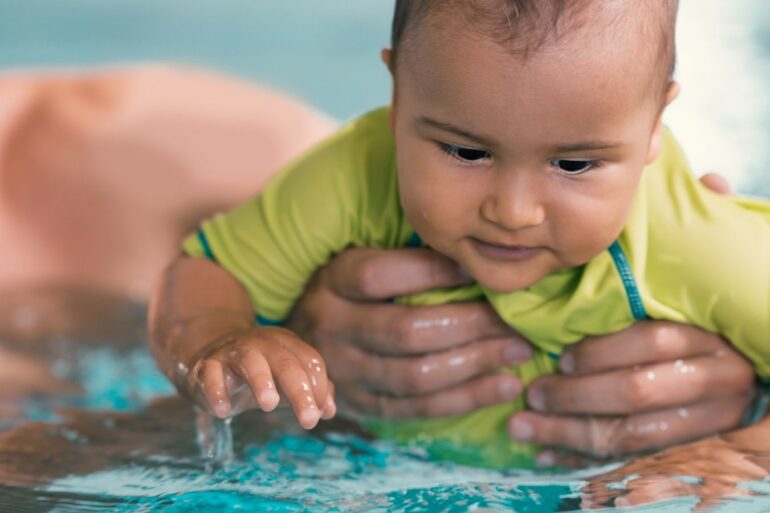





Great tips! I wish I knew these when raising our kids. Thank you Chloe!
Great tips from Chloe! Spread the word to your friends!